PROTECT YOUR DNA WITH QUANTUM TECHNOLOGY
Orgo-Life the new way to the future Advertising by AdpathwayCantaloupes, watermelons, honeydews, and other melons are some of the most refreshing treats you can grow in the garden. Picking a melon from the vine in the morning, popping it in a cooler, and enjoying it that afternoon is an experience everyone should enjoy. The problem with melons is that they take multiple months to mature. It is not uncommon for a plant to take 90 or 100 days to go from seed to ripe melon.
This long growing time isn’t a problem in warm climates, but it makes it challenging to grow these fruits in cold regions with short growing seasons. That’s where it pays to look for the fastest-growing melons.
These varieties produce ripe fruit in less than three months, so they work well if you live in zones four or five. They’re also excellent options if you’re late getting your melons in the ground. Here are some of the fastest-maturing honeydews, watermelons, cantaloupes, and other types of melons.
Hearts of Gold Cantaloupe

Hearts of Gold Cantaloupe Melon Seeds
Minnesota Midget Cantaloupe
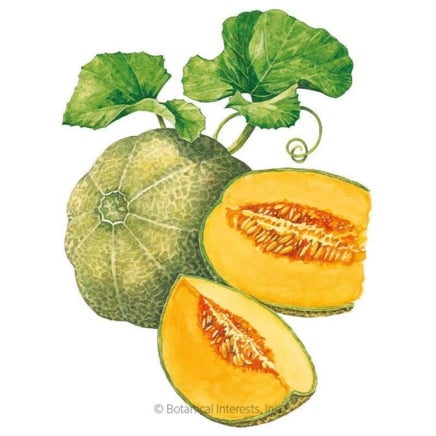
Minnesota Midget Cantaloupe Melon Seeds
Sweet Delight Honeydew Melon

Sweet Delight Honeydew Melon Seeds
‘Golden Giant’
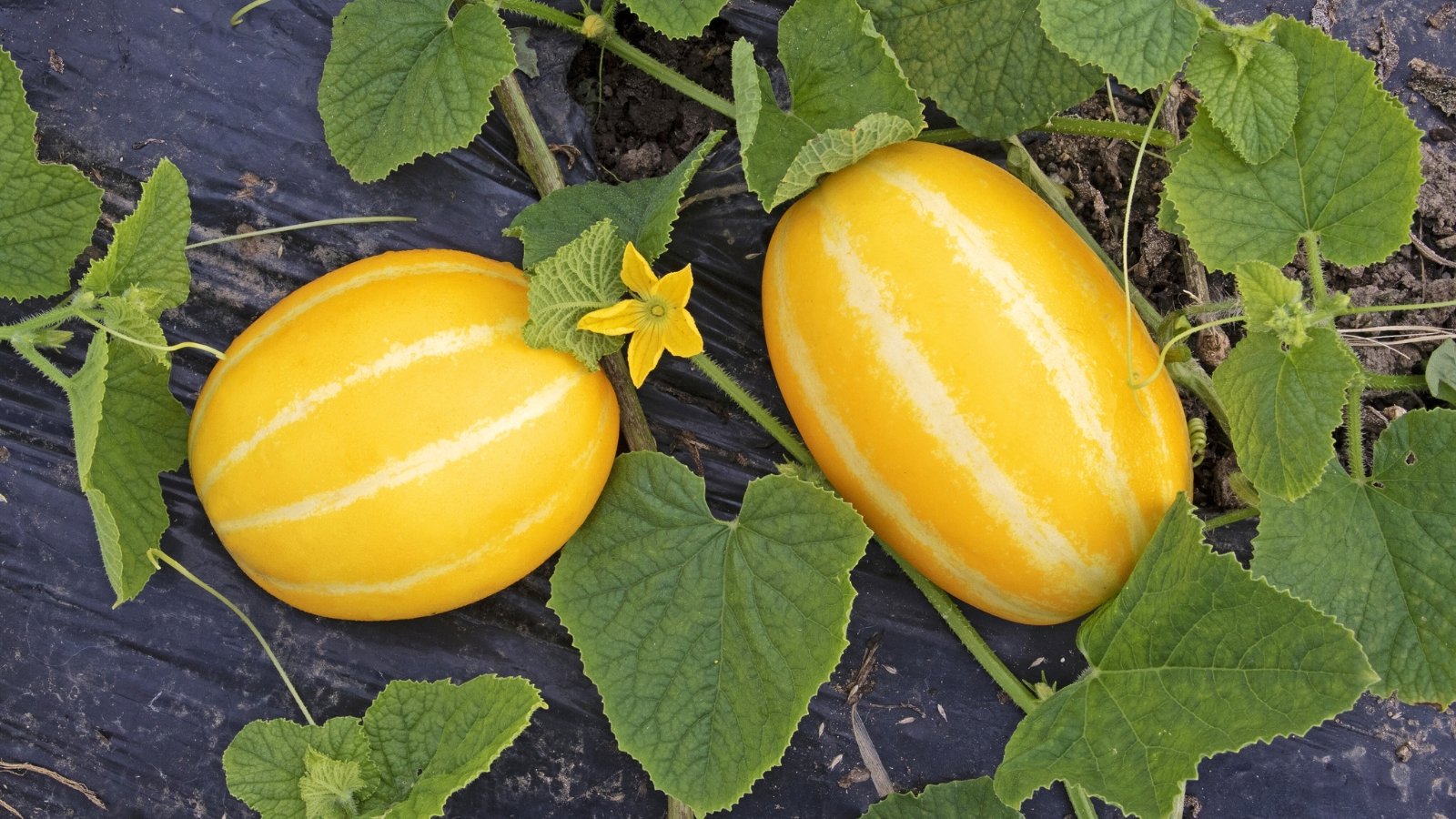 A sweet aroma indicated that ‘Golden Giant’ melons are ready for harvest.
A sweet aroma indicated that ‘Golden Giant’ melons are ready for harvest. ‘Golden Giant’ is a Korean melon that matures in just 60 days after transplanting. If you choose to direct sow, expect the plants to take a week or two longer to produce ripe melons. Regardless of which method you choose, this fast-growing melon is perfect if you got a late start on your summer plantings or live in a region with a short growing season.
Like most Korean melons, ‘Golden Giant’ is less sweet than cantaloupes and honeydews, but it has a similar texture. The elongated fruits weigh between two and three pounds and have a bright yellow skin when ripe.
Unlike some types of melons, these fruits won’t easily slip from the vine when ripe. Characteristics including a slightly soft blossom end, sweet aroma, and matte skin mean the melon is ready to pick.
‘Escorial’
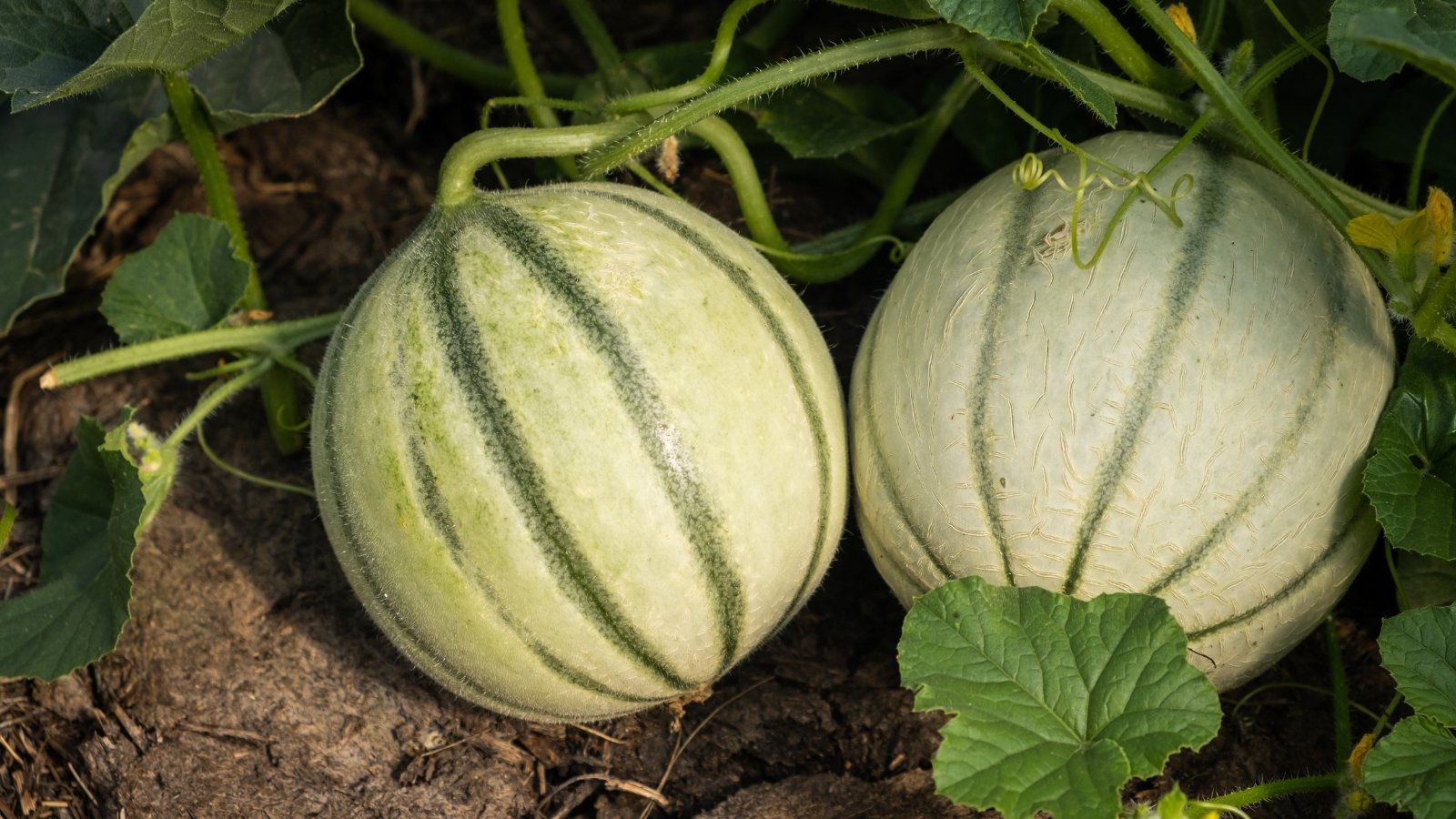 Honeyed orange flesh tucked inside a petite green shell.
Honeyed orange flesh tucked inside a petite green shell.This Charentais melon matures just over 70 days after transplanting. You can plant the melons in the ground in mid-June and harvest them before the end of September. That means they’re a great option if you’re looking to plant another round of melons later in the growing season.
The small, spherical fruits average two pounds and have a light mint green skin that turns light yellow as the fruits ripen. The skin is thinner than muskmelons and doesn’t hold up well in transport. That makes this one of the best types of melons to grow at home.
Keep a close eye on the tendril closest to the melon, and pick just after it turns brown. Cutting into a perfectly ripe ‘Escorial’ melon reveals extremely fragrant orange flesh with notes of honey and jasmine. The taste is extra sweet, but the melons are small enough that you can eat one in a single sitting.
‘Natsu Cocoa’
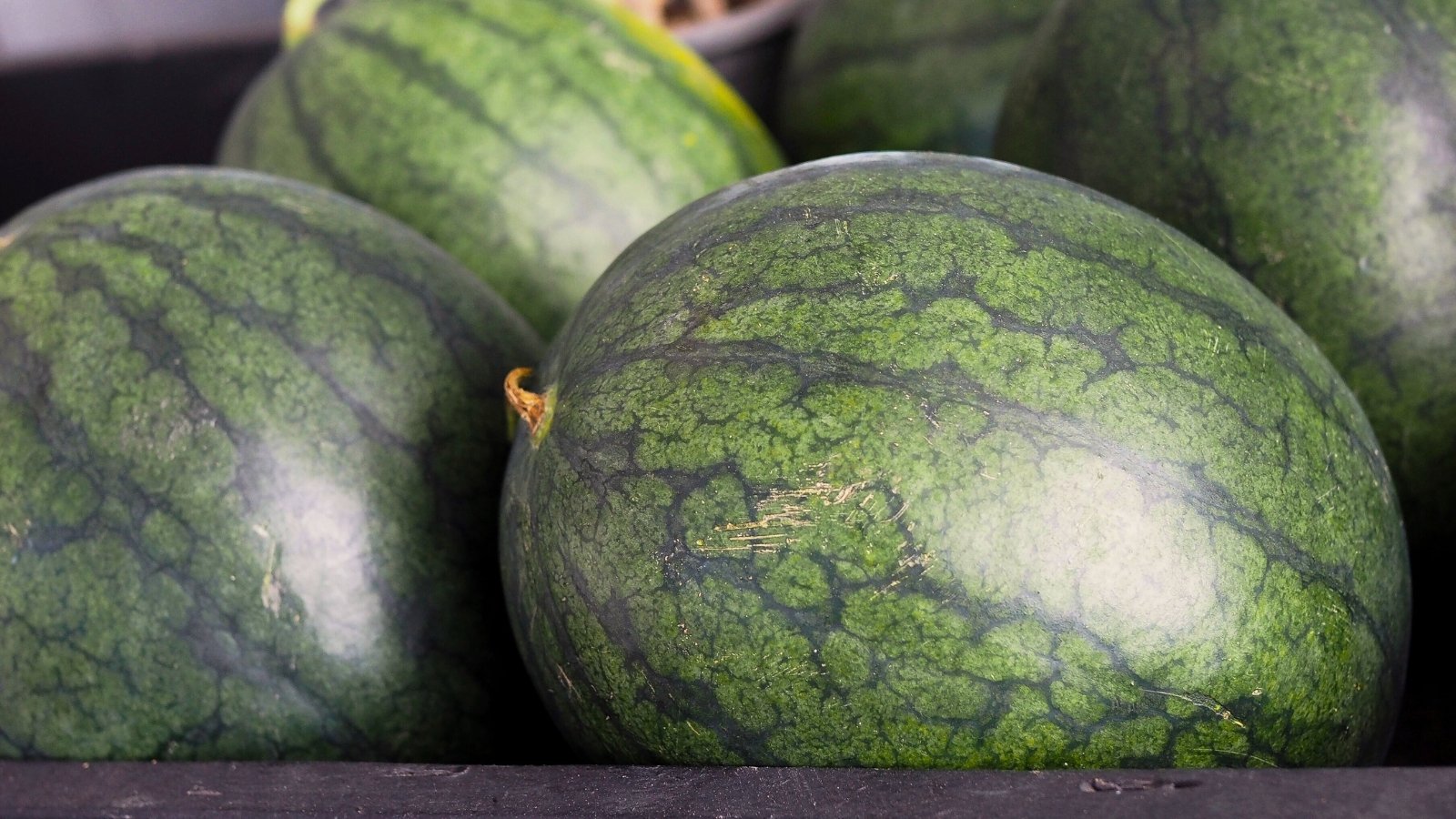 A fast grower that doesn’t skimp on sweetness.
A fast grower that doesn’t skimp on sweetness.Most watermelons take close to three months to mature, especially if they’re large. Looking at mini melons helps, especially if you focus on a fast-growing variety like ‘Natsu Cocoa.’ It produces ripe fruit just 65 days after transplanting.
The Japanese word ‘Natsu’ translates to summer, which is fitting since these are such a special treat in August and early September. The spherical fruits have a deep green skin and weigh just over three pounds. Their pink flesh is super sweet, no matter if you pick one of the first or last fruits to mature.
Although these are mini watermelons, they still require a large amount of space to grow. Give them at least four feet of space where their vines can grow, or train them to grow up a trellis. Using netting and trellises will keep the fruit’s weight off the vine and prevent immature melons from dropping.
‘Minnesota Midget’
 Perfect for short summers and small garden dreams alike.
Perfect for short summers and small garden dreams alike.This small, fast-maturing cantaloupe grows well in areas with short growing seasons. It’s an excellent choice if you live in the Northeast or the Upper Midwest, but you can plant it in other areas as well. Growing this cantaloupe at home will reward you with fruits that outshine the grocery store melons.
This variety was first introduced by the University of Minnesota in 1948. Since then, it’s reliably provided gardeners with fast-growing, compact plants and delicious melons. The fruits mature between 60 and 70 days after planting, so you can sneak in multiple crops in warm climates.
The small plants have shorter vines than many other types of melons, so they’re an excellent choice for raised beds and even large containers. Just make sure to plant them in soil rich in organic matter and provide lots of water.
‘Farthest North Galia’
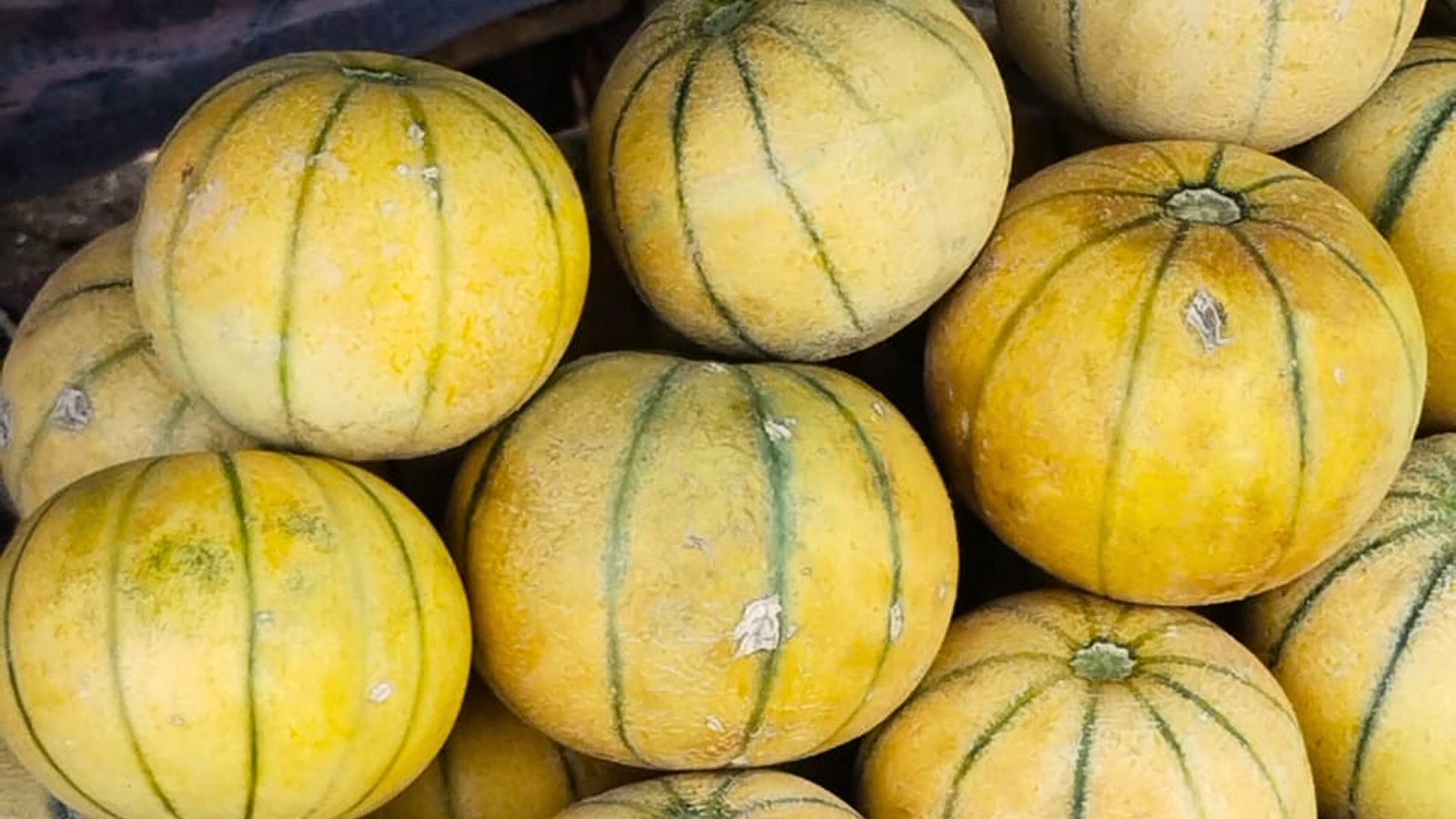 A cool-climate charmer with sweet green flesh inside.
A cool-climate charmer with sweet green flesh inside.Growing melons in cool climates with short growing seasons is challenging. However, fast-growing varieties make it easier. Plant breeders at Adaptive Seeds have been selecting for small and fast-maturing honeydews that work well in these cool climates. The result is ‘Farthest North Galia.’
This variety is still in the works, so you’ll find slight variation in the rind appearance and fruit flavor. However, all of the seeds produce plants with small and fast-maturing melons with green flesh.
Planting a few of these seeds provides the perfect opportunity to experiment with seed saving. Maybe you want to select for the melons that grow the fastest, or perhaps you like a floral rather than musky flavor. Whatever you’re seeking, pay close attention to the plants, then save seeds from the ones you like most.
‘Kiku Chrysanthemum’
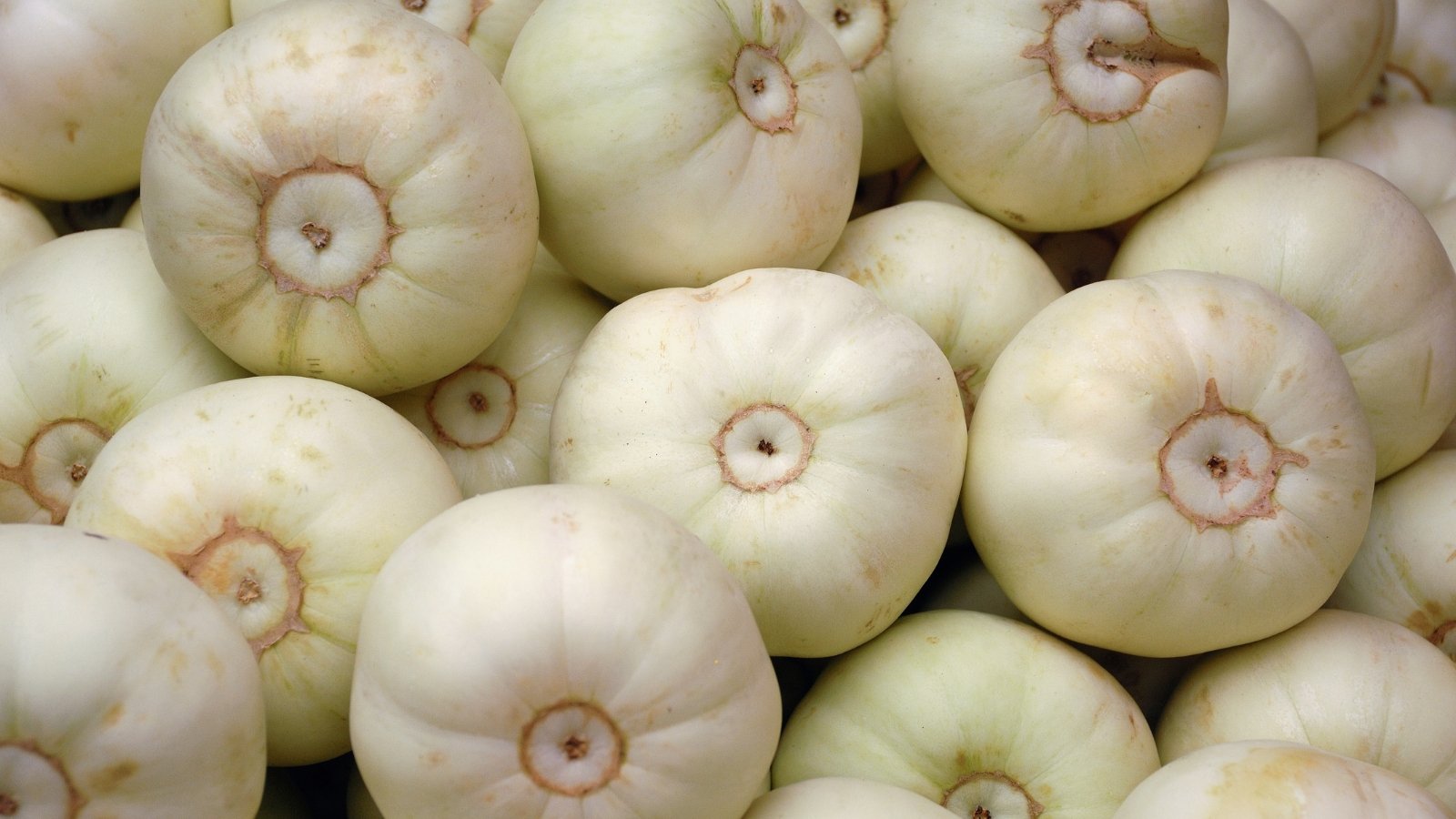 Quick to grow and generous with round little fruits.
Quick to grow and generous with round little fruits.Don’t let the name chrysanthemum confuse you; this is indeed a melon plant. This Japanese variety has a compact growth habit that makes it optimal for planting in containers and small gardens. Although the plants don’t produce massive vines, they reward you with lots of small fruits.
The round melons have a white skin and interior and are about the size of a softball. Their flavor is somewhat between a cantaloupe and a lychee with strong hints of tropical fruit.
As one of the fastest-growing melons, you can expect to enjoy ripe fruits about 75 days after planting. The plants will continue to produce other ripe melons as the growing season goes on.
‘Hearts of Gold’
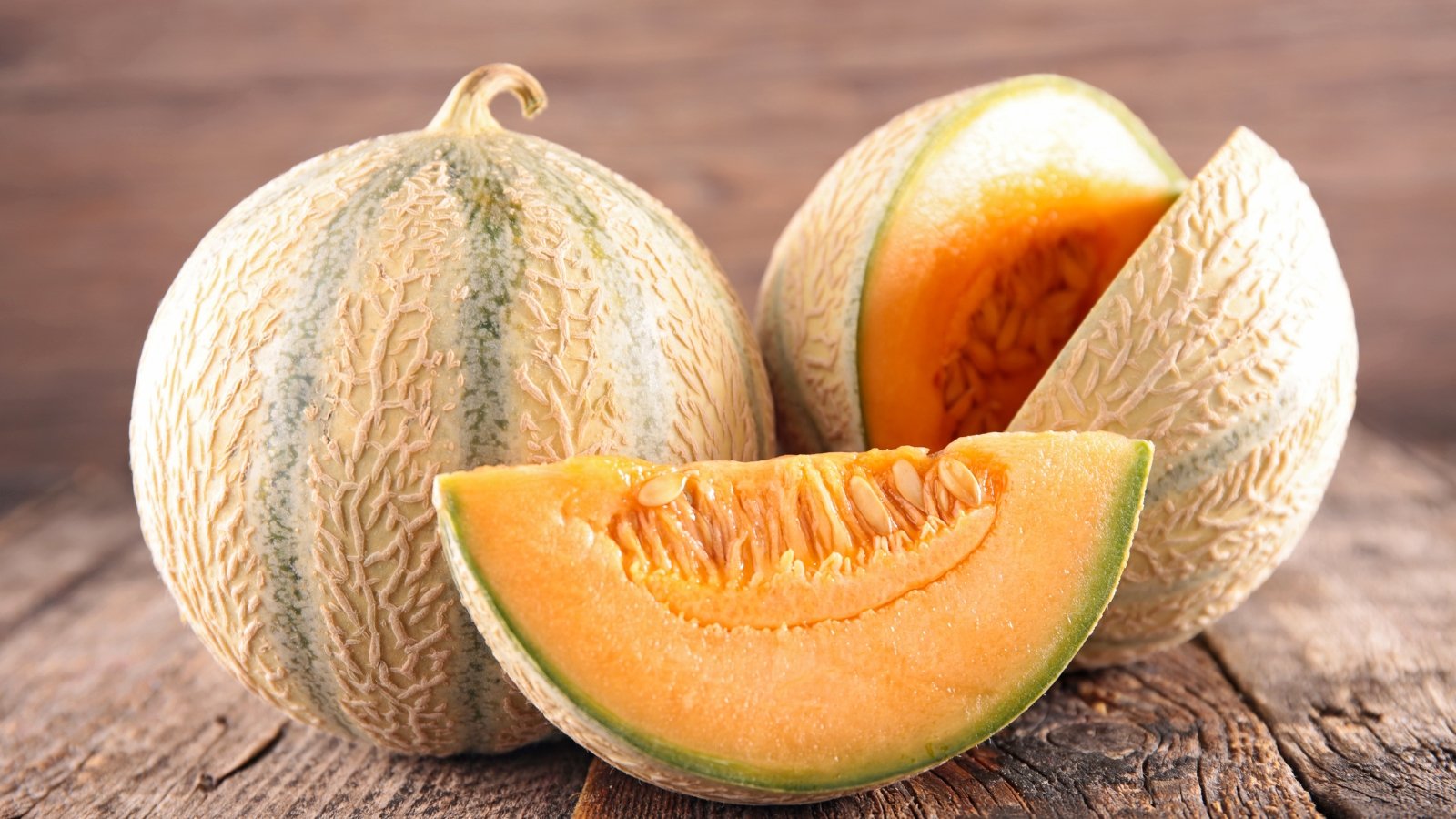 Let the tendril dry, then slice into sweetness.
Let the tendril dry, then slice into sweetness.Another quick-maturing cantaloupe variety, ‘Hearts of Gold’ produces melons that are larger than ‘Minnesota Midget.’ The fruits ripen about 80 days after planting and average around three pounds. They have an intricately netted skin and bright orange flesh that’s sweet and musky.
Although this variety makes the list of fastest-growing melons, it’s not the quickest to mature. Planting it a week after your last frost date will give it the longest possible window to grow and set fruit.
The melons are ripe when the skin takes on a yellow hue and smells sweet. You can also look at the tendril closest to the melon and check to see if it’s brown.


 3 weeks ago
17
3 weeks ago
17





















 English (US) ·
English (US) ·  French (CA) ·
French (CA) ·